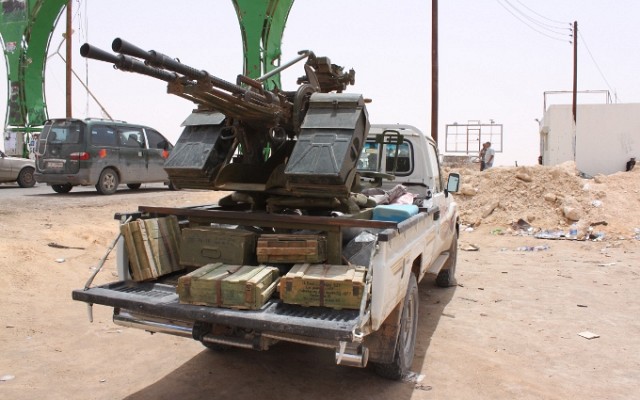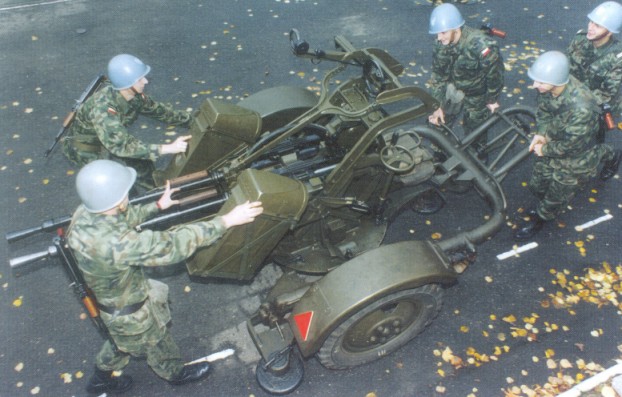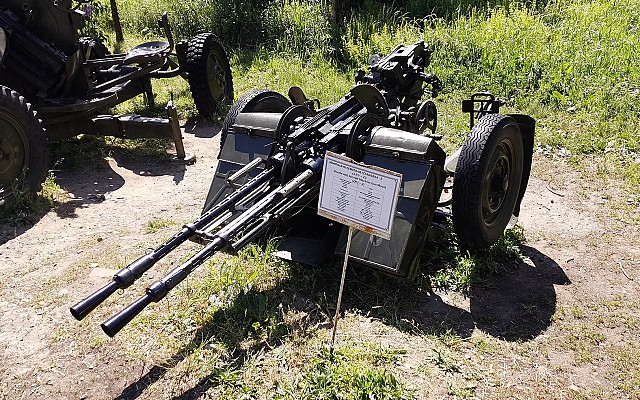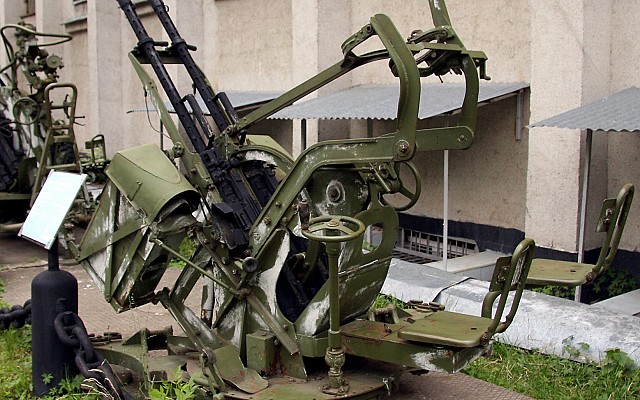ZPU-2
ZU-2 | China: Type 58
Overview
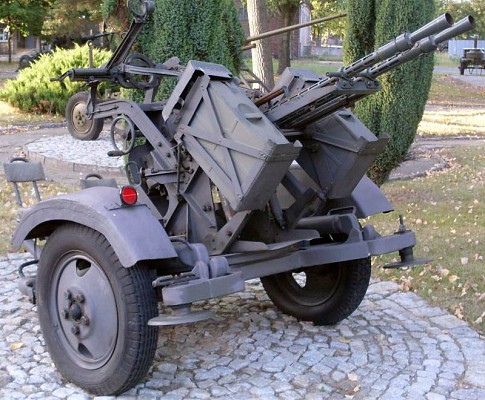
ZPU-2 (early model)
Early model ZPU-2 with ammunition boxed alongside the barrel.
Source: Kerim44 -
© GNU Attribution - Share Alike license
1955 for ZU-2
1948 (ZPU-2 in Soviet state trials)
1950 - 1952 (ZU-2 design project)
1954 (ZU-2 in Soviet state trials)
Soviet Union - No. 525 Metallist plant (ZU-2)
China
Poland
Over 370 ZPU-2 produced in USSR
Russian for "14.5 mm anti-aircraft machine gun ZU-2"
ЗПУ-2 (cyrillic)
56-US-562 (GRAU index for ZPU-2)
56-UZ-562 (GRAU index for ZU-2)
UZPU-2 (early name for ZU-2)
PKM-2 (Polish production of ZPU-2)
Type 58 (Chinese production of ZU-2)
Description
Introduction
The ZPU-2 is an early Cold War era anti-aircraft gun of Soviet origin. It was developed in the late 1940's and introduced at the same time as the larger four-barrel ZPU-4. The introduction of the jet aircraft made the ZPU-2 quickly obsolete as an anti-aircraft gun. However, the ZPU-2 did prove capable against helicopters and ground targets. Nowadays the ZPU-2 is mostly used as heavy armament on fast and mobile all terrain vehicles.
Design
The ZPU-2 is a twin barrel anti-aircraft gun. It is based on a triangular chassis with outriggers. The turntable mounts two KPV heavy machine guns, two belt boxes, a gun sight and two seats. A two wheel detachable trailer reminiscent of the Nazi German 2cm Flak-38 is used. For airborne forces the UZPU-2, later renamed ZU-2, was developed. This uses a rearranged and updated mount with faster traverse rate and much lighter trailer. The ZU-2 replaced the early model ZPU-2 in production and became the most common model. Both models are often called the ZPU-2.
Firepower
The two KPV heavy machine gun fires the 14.5x114mm round at a cyclic rate of fire of 600 rpm. The combined cyclic rate of fire is 1.200 rpm. When firing in short bursts the effective rate of fire is 300 rpm. The maximum effective anti-aircraft range is only 1.4 km, although its slant range is about 5 km. The ZPU-2 is very effective against ground targets due to its volume of fire. It has the ability to pierce the armor of most Cold War era armored personnel carriers.
Mobility
The ZPU-2 is rather mobile due to its limited weight and size. It can be manhandled over short distances and may be towed by light vehicles. The early model carriage allowed for a high speed on road and in the field, but was rather heavy. The ZU-2 reduced the weight in travel configuration by more than a third. This made it far more useful for airborne forces and it replaced the early model ZPU-2 on the production line.
Users
The ZU-2 was in widespread service during the early Cold War era as a light anti-aircraft gun. Many were adopted by Soviet forces, Warsaw Pact forces and nations around the world with ties to the Soviet Union. Many were replaced by both MANPADS, such as the 9K32 Strela-2, and the more capable 23mm ZU-23-2. Nowadays most remaining ZPU-2 are in service as armament for so-called technicals. The 'technical' is a colloquial category of combat vehicles comprising of softskin pick-up trucks fitted with heavy armament including heavy machine guns, light anti-aircraft guns, recoilless rifles and small caliber rocket artillery.
Variants

ZPU-2
The ZPU-2 is is the early production version of the anti-aircraft gun armed with two KPV heavy machine guns. This early version is larger an heavier than the later version. The early version of the ZPU-2 has a U-shaped carriage with two large wheels. The carriage is removed when in the firing position. The two KPV heavy machine guns are mounted side by side and the belt boxes are arranged alongside the barrels.
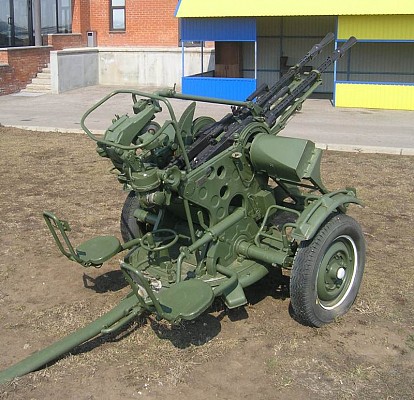
ZU-2
The late production model of the ZPU-2 is much lighter due to the use of a lighter chassis, smaller wheels and a single tow bar. At first it was called UZPU-2 which was changed to ZU-2 a few years later.
The ZU-2 can be identified by its smaller wheels and mudguards and the ammunition boxes are mounted sideways. In the firing position the wheels are raised and not removed. The late model is the most common version of the ZPU-2 and has been produced under license in China as the Type 58
Details
Media
Related articles
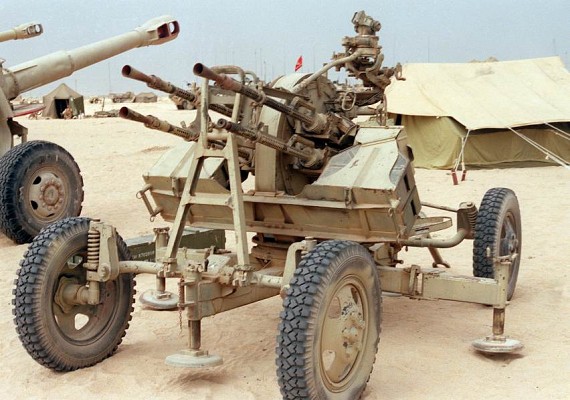
ZPU-4
The ZPU-4 is the larger brother of the ZPU-2. It uses a larger four wheel carriage and has four KPV heavy machine guns as main armament.
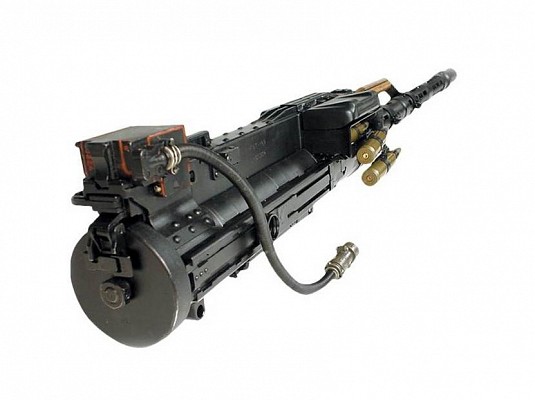
Vladimirov KPV
The ZPU-2 is armed with two 14.5mm KPV heavy machine guns.
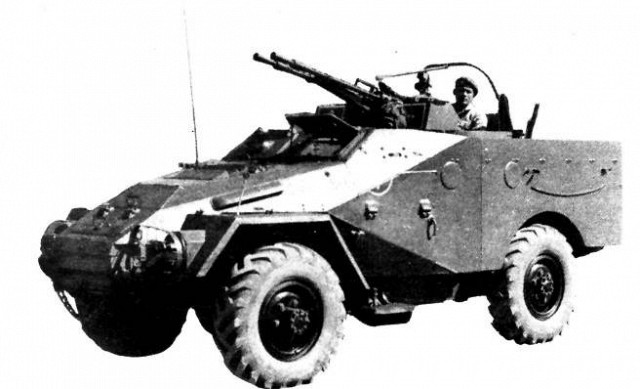
BTR-40A
The ZPU-2 mount was modified to fit the BTR-40 armored personnel carrier, creating the BTR-40A self-propelled anti-aircraft gun.
